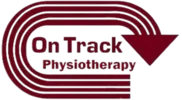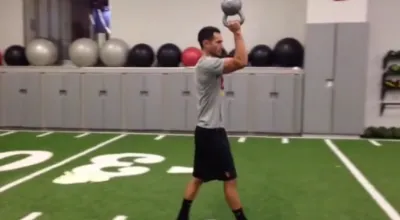Chances are if you have been to Physical therapy, you have probably seen someone performing the exercise below working on their shoulder. Okay, so maybe not with their shirt off. But nevertheless it seems to be a staple of every physical therapy program for the shoulder.
While this is certainly a useful exercise, and it will defiantly get some patients feeling better. However, the vast majority of the patients that walk through the door need a more comprehensive program than this.
Maybe just as bad, the physical therapist or assistant will hand you 2-3 pages of similar exercises, tell you to do 3 sets of 15, 2-3x per day. Ever heard of the shotgun approach? Your health care provider is hoping and praying that one of these might just work and make you feel better. That being said, the exercises do have some legitimacy and are very useful for the sedentary population. However, if you are reading this then chances are you take an active roll in your health and you have found these exercises work, but don’t always cut it when it comes to getting you back to 100%.
So here is the reality of the rotator cuff: It’s job is to stabilize the humeral head (the ‘ball’ of the shoulder) in the glenoid fossa (the socket). Its secondary job is to assist with actual movement.

What most health care providers are going on are fancy EMG studies that measure how hard a muscle can fire in isolation during a specific activity. There is certainly great evidence that the rotator cuff muscles are firing during these exercises. The problem as I alluded to before is that these muscles do not function solely in this way in real life.
These smaller rotator cuff muscles are stabilizers, not movers(like the larger deltoids, pecs, lats, etc). The traditional rotator cuff exercises train the muscles like ‘movers’ which is not their true function.
The reality of the rotator cuff again is to stabilize the humeral head (the ‘ball’ of the shoulder) in the glenoid fossa (the socket). It performs this task reflexively, meaning it happens without you having to think about it. All four muscles quickly fire and relax in a specific sequence (depending on the activity) to stabilize the shoulder joint. They never work in isolation.
So what are the best ways to fire the rotator cuff reflexively?
1) Compression – this means putting weight through the arm. Examples would include exercises that involve hands or forearms on the ground holding your body weight up (think pushup, plank, or a variety of other variations. Another example would be actually pressing a weight when deemed appropriate.
2) Distraction – this would include anything that pulls downward or outward on the shoulder (think traction). This would include carrying weight by your side, pull-ups, horizontal rows, lifting from the floor, etc.
In any of the above activities, the brain immediately recognizes the need for stability and reflexively fires the cuff to prevent bad things from happening like dislocating your shoulder or falling on your face. Now obviously I’m not trying to actually do these things to you, but forcing muscles to fire reflexively always works better when there is some sense of urgency.
I’ll leave you with a few of my favorites below, and in part 2 I’ll tackle more as we start to look deeper.
Arm/Leg Diagonals – a.k.a. the Bird Dog – Shoulder Compression for Reflex Stabilization
Bottoms up Carry – Downward distraction with instability to elicit reflex stabilization

About the Author: Dr. Greg Schaible is a physical therapist and strength coach specializing in athletic performance. He attended The University of Findlay as a student athlete. As an athlete he competed in both Indoor and Outdoor Track & Field where he earned honors as a 5x Division II All-American and 6x Division II Academic All-American. In 2013 he completed Graduate School earning his Doctorate of Physical Therapy (DPT). Greg is the owner of On Track Physical Therapy in Ann Arbor, Mi. Follow On Track PT and Performance on Facebook.





